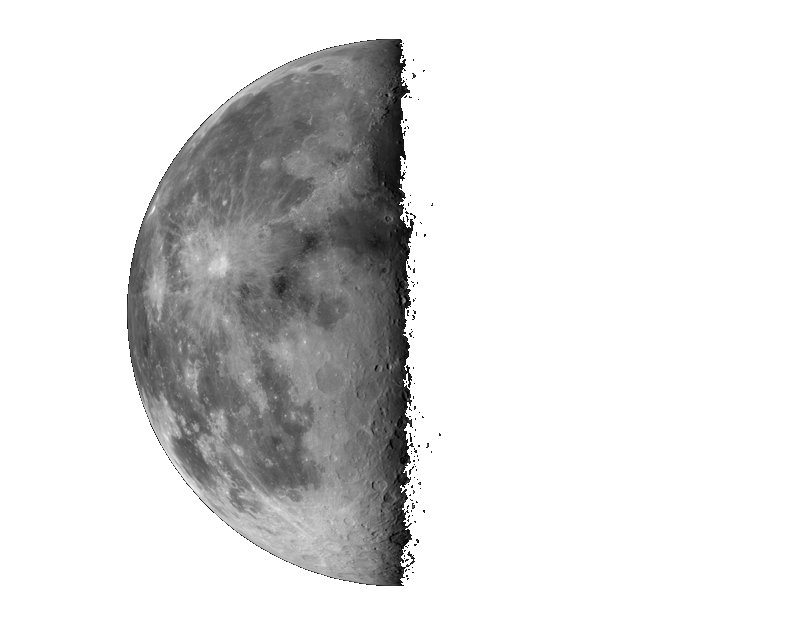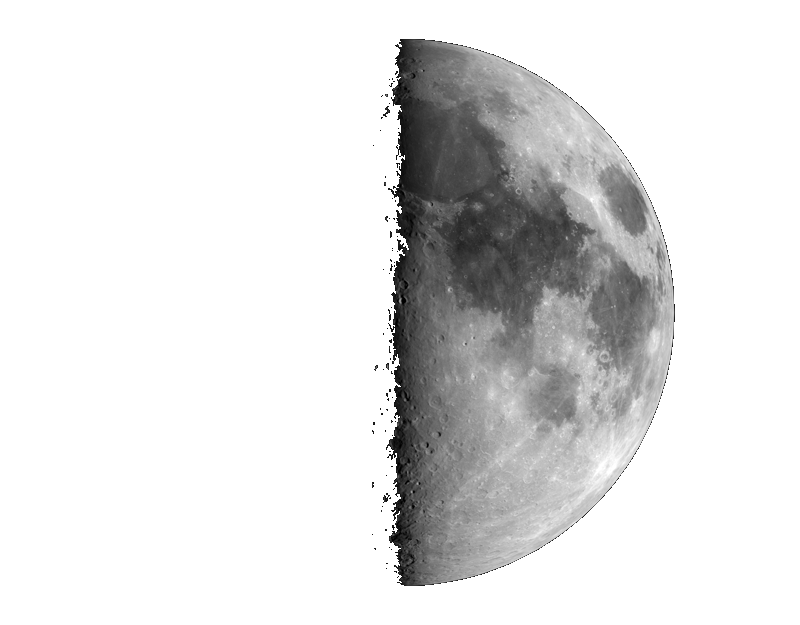Pluto festival of disinformation
Some comments on “Why Pluto is a planet, the embarrassment of the IAU and why it had it coming” by Dr Stern, during the Pluto Festival 2021…
The conference is on youtube : https://www.youtube.com/watch?v=azbLNSKDQrM&t=2466s
I am normally working at night and have little free time, so didn’t see this video in real time. I don’t know if it can be called Pluto festival, but it sure is a festival of bad faith, unscientific conduct, misrepresentation of facts in order to support a very idiotic idea that somehow Pluto is, or at least should be a planet. I worked on this blog page, then forgot about it, and another cloudy night later, published it on my web site.
The video starts at 2:50 after an introduction. I’ll write down the times when remarks need to be made.
First the title is false, because the IAU has no reasons whatsoever to be embarrassed with the current situation.
3:30: Starting directly with an ad hominem attack, like if Dr Brown had done something personal to Dr Stern. Talking bad about him and his research. You can say many things about how Dr Brown promoted himself as Pluto killer (which he was clearly not) but criticizing colleagues publicly is not a typical attitude in the academic field. And of course, doesn’t change the fact that Pluto is an asteroid .
5:00: He could maybe explain that the revolution in planetary science concerning the discovery of dwarf planet was mostly done by… Dr Brown and his colleagues at Caltech… Taken into account the previous slides, it would only be… fair. Most of the objects shown on the “dwarf planet revolution” were discovered by Brown and his team at Palomar Observatory. Also, Kuiper belt is a misnomer Gerald Kuiper never imagined a transneptunian asteroid belt, his publication in the 50s talked about a transplutonian asteroid belt, which does not exist. The first scientist who predicted the fact that there was a transneptunian asteroid belt was Julio Fernandez a well know planetologist from Uruguay. It should be called Fernandez belt.
6:55: Either he plays the idiot or doesn’t know anything about the real story behind that IAU definition. His presentation is factually incorrect. First, and before the GA of the IAU (General Assembly), the general secretary of the IAU named a committee which tried to get a correct definition of what was a planet (surprisingly, before 2006, there was no definition of what was a planet, a planet was an object which belonged to the list: Mercury, Venus, Earth, Mars, etc…. This group came up with a definition which kept Pluto as a planet, using arguments that were incorrect and was rejected when presented to the experts in the field.
Since Dr Stern apparently has no idea whatsoever of how things proceeded, one can suggest a few web pages, like for example https://www.fossilhunters.xyz/pluto/the-battle-of-prague.html
There are many web pages which explains how it really happened. Clearly not the way Dr Stern describes it, which he describes like “there was an insignificant reunion and some idiots voted to demote Pluto”.
The IAU never reacted “in horror”, only in his mind. That’s ridiculous.
Number 2 came from the definition proposed by the committee before the IAU GA (general assembly). And of course, the notion of “hydrostatic equilibrium” was normally used for gases or liquids (for stars for example). Not rocky objects. By the way in this committee only one astronomer had ever discovered an asteroid…
It was of course not created by non-experts, it was created by _the_ experts in the field. In the group that came up with the adopted definition are people like Julio Fernandez (the person who predicted the existence of the transneptunian belt and who is the real Pluto Killer), Gonzalo Tancredi (current president of division F of the IAU, “Planetary systems and astrobiology”). Also, in the people who rejected this first incorrect draft was Andrea Milani from the university of Pisa who was one of the leading solar system dynamicist. If you consider these people to be non-experts, you are clearly an ignorant.
8:47: The fear of high number is obviously not an argument, the argument is that there are two classes of objects in the solar system, planets and small bodies, and the difference is obvious. The current number of asteroids is higher than one million and 22151 (as of February 2021) are named, including 134340 Pluto or for example 6373 Stern .
The purpose of the definition of the IAU was not in any way about large number of planets, it was to get a correct definition. Some journalists talked about it, but not scientists. A river and an ocean both contain water, except a river is not an ocean. There 5 oceans on Earth, and a multitude of rivers. There are 8 planets and a multitude of asteroids.
The example of the periodic table is of course quite funny, since in astronomy the periodic table is limited to only 3 elements: Hydrogen, Helium and… the metals. Stellar astronomers talk about the metallicity of stars, meaning the percentage of elements which are not hydrogen and helium.
11:03: Of course, it’s not flawed, a planet rotates around the sun, and what does rotate around another star or is not around the sun is called an exoplanet. He says it himself.
11:35: It’s really not a question of using a “strict interpretation” it’s a matter of either understanding what “clears its neighborhood” mean. It means that at the beginning of the solar system, on can consider there was a mass of gas, dust particles around the sun. They collided and created protoplanets and then planets. Whatever didn’t form a planet is an asteroid. To be a planet, that body has to contain most of the mass in the zone where the planet orbits. So here is a table that Dr Stern can ignore because while it is factual, it goes against his idea that Pluto is a planet:
| Name | % of the mass in its zone | Object type |
| Mercury | 100% | Planet |
| Venus | 100% | Planet |
| Earth | 98.78% (rest is moon) | Planet |
| Mars | 100% | Planet |
| Ceres | 30% | Asteroid |
| Vesta | 9% | Asteroid |
| Jupiter | 99.97% | Planet |
| Saturn | 99.98% | Planet |
| Uranus | 99.99% | Planet |
| Neptune | 99.98% | Planet |
| Pluto | 2.2% | Asteroid |
| Eris | 2.5% | Asteroid |
| Haumea | 0.7% | Asteroid |
| Makemake | 0.8% | Asteroid |
I guess a normal person will be able to see that there is a clear difference between what is a planet and what is an asteroid. The near earth objects are indeed there, but not for long. Because… the telluric planet will make them either to collide on the sun or the planets, or be ejected by Jupiter. They are in unstable orbits and never last several millions of years, when they start going into the inner solar system or get too close to Jupiter. At a given instant, indeed there are objects in the zone where planets orbit, but these objects will be cleared fast enough (on geologic times).
He makes a correct point though, the transneptunian belt and the main asteroid belt are indeed not cleared by any planets, because… there are no planets there… an asteroid can stay there basically for ever (at least after the first phase of formation of the solar system).
14:56: The classical game, if Jupiter was in the transneptunian belt, or if the Earth was in the transneptunian belt. Stupid argument of course since in the transneptunian belt you don’t have enough material, and not enough collisions to form a planet. Again, taking the example of oceans and rivers. In the Sahara Desert, there are oasis. But if you were to put an ocean there… would it be called a desert ?. No, the Sahara Desert would be called an ocean. If you were to place, artificially, something like Jupiter in the transneptunian belt, in a very short time (again, geological time, a few million years) it would “clear its orbit” and the transneptunian belt would not exist anymore. And then it would be still called a planet. Then by definition almost, you can’t have a Jupiter so far away from the sun because there is not enough material there. So, this “if you were to put, bla bla bla…” argument is just that. Nonsense. I don’t understand how Dr Stern cannot see the fallacy in his ridiculous reasoning.
16:15: Here we go…
Point 1 is ridiculous again. We can’t measure the diameter of most asteroids. Pluto, the largest asteroid of the solar system was discovered in 1930, and the first correct measurement of its diameter was only obtained after 2010, using stellar occultations. Eris was first measured in 2011 (I know since I am one of the coauthors of the Nature paper we published), but most of the smaller objects in the solar system are impossible to measure. So, you can’t base a definition on a characteristic you can’t measure. Period. This is the reason why the first committee definition was rejected by the experts in the field in the first place. Of course, either this goes above the head of Dr Stern, or he doesn’t want to talk about it because it goes against his idea that Pluto is a planet.
If you can measure for a few objects and then not for the vast majority of the others, then you create some kind of floating definition. You save private Pluto, and leave a huge number of solar system objects in some kind of limbo zone. Imagine you decide arbitrarily (what the first committee did) that a planet is everything which has a diameter larger than 800km. The first point to understand is that it will take a few centuries or more to measure correctly all objects in that diameter range in the transneptunian belt. And very likely there won’t be any spacecraft going there to fly by all these asteroids. But suppose that with either several occultation measurements or a flyby, you find an object which is an ellipsoid, which is like 700x900km, how do you classify it? It’s in a kind of Schroedinger zone, where the object can both be a planet and an asteroid at the same time. Incorrect definition.
Then of course the definition of “dwarf planets” is ridiculous in essence. It was adopted in a hurry near the end of the 2006 GA of the IAU so that some Pluto lover American scientists would stop crying warm tears because their Pluto was not a planet anymore. We went from an epoch where there was no definition of what is a planet. A planet is something contained in this list “Mercury, Venus, Earth, etc…”, to a correct definition of what is a planet (i.e. the IAU definition) to another epoch where we created in a completely artificial manner, only because some people have an affective relation to Pluto, which after all is Mickey Mouse’s dog, where a dwarf planet is an object contained in this list “Pluto, Eris, Haumea, Makemake, etc…”. But without any correct definition, because if you can’t classify an object using a parameter you can’t measure, of course. It’s like trying to divide a group of people according to their blood type, just by looking at them. And he dared talking about a botched definition… this one is botched, and big time. To get an idea of the mess that the dwarf planet category is, please refer to http://web.gps.caltech.edu/~mbrown/dps.html
17:18: First point, you only have access to the dynamical property of the object, you never have a measure of a celestial object’s “attributes”, except for a very small number of objects. Sometimes if the asteroid has a satellite, we can derive its mass, but for most, we don’t know precisely the diameter, the albedo, let alone the shape, or chemical composition. The only clear separation useable is… the “cleared its neighborhood” parameter. No surprise it was adopted by the IAU.
Of course, he mixes the planets, the satellites of planets, and the asteroids to show that there is a continuity. If you remove the satellites of planets, because they are satellites, orbiting around a planet and not around the sun, then you have the 8 large planets (which you can separate in telluric and giant), and then… asteroids with a clear gap in between.
And of course, in the future when we will study exoplanets in much more details, we will see that there are asteroid belts, and therefore asteroids.
19:20: again, the location makes that there are planets and that there are asteroids. If there is enough mass, and collisions, then you can create a planet, and it’s the most important object in that zone. If not you find zillionths of asteroids, including a few giant ones like Pluto and Eris.
Of course, using again the “planetary size”, knowing we can’t measure it for 99% of the small bodies of the solar system is kind of funny.
The table above is also quite intuitive, “big, contains most of the mass there: planet” “small, is in a zone where there is zillionth of other small objects: asteroids”. I don’t see the difficulty of understanding this.
19:45: this is a really very important scientific argument… I mean for people who believe Star Trek is a documentary, which it is not really.
21:20: I like the “we as scientists are reductionists, and we want to have a classification system that lets us sorts things into bins but we don’t require memorization”. Indeed, we also want a system where the bins are bins and not a definition which doesn’t give us the possibility to know if such an object belong in such or such bin. If you cannot define correctly the separation between a planet and an asteroid, then your definition is incorrect. And between Pluto and the smallest of the solar system object, there is a continuity. The only clear separation is between planets and asteroids (and Pluto is an asteroid).
22:20 : yes, but Mars has cleared its zone, and Pluto has not. That’s the definition. All stars have or have had nuclear reaction in their center. Sirius B is the size of the Earth, but the mass of the sun, and… it’s a star, not a planet. This definition is clear, you can place whatever object in either a star or a planet category.
22:27: the tallest dogs are about 1m tall. If the ratio of Jupiter (diameter about 140000km) to Pluto (2376 km) was respected then something like the small dog on the picture should be about the size of the beetle (1.7cm…). And wouldn’t be called a dog, not even a mouse (even though a mouse has also four legs, a body a head and a tail). Now if we talk about mass, and Jupiter (1.9 10^27kg) is an elephant (6 tons), then Pluto (1.3 10^22kg) is something like 41 grams… like a sparrow.
At any rate, the point is not about comparation of mass or size of objects, it is about the fact that you can’t measure them, and that there is no clear separation between very large asteroids and very small one. Impossible to separate them into two different bins using valid criteria.
22:47: This is of course very oriented/misleading image. It would tend to show that there are big asteroids, and then very small, irregular ones. Except this is untrue, there are a lot of them which are in between, and if you decide not to show them, it’s because it clearly destroys your argument.
Ceres and Vesta have been seen by spacecrafts, and are exactly in between, except it’s better for him not to show them on the slide… That’s lame and unscientific.
24:40: Again, a mis-representation: 300 scientists, we don’t know if they are astronomers, they are a ridiculous part of the 13000 astronomers in the world, and are all American… (selection effect?). This is again lame and unscientific. I like the “little meeting in Prague”. He should really one time go to a General Assembly, it’s really a very big meeting with several thousands of astronomers, many meetings going on at the same time, etc. Saying “in their little meeting in Prague”… tsss…
25:36: Of course, completely wrong. Papers published on dwarf planets, unfortunately use the term dwarf planets, papers published on planets talk about planets, papers published on asteroids talk about asteroids, comets, comets, etc… This is again completely false information.
Quite easy to verify searching for : https://ui.adsabs.harvard.edu/search/?q=pluto
Score 100 to 0, bullshit.
27:11 : The nice thing about the ADS (the link above; the astrophysical data system) is that you can search for publication by name.
https://ui.adsabs.harvard.edu/search/?q=tyson%2C+neil+de+grasse gives you 12 scientific publications. The last one been in 2009, and apart from the 2 last ones, none is on asteroid research. In this context, Mr Tyson’s point of view has about the same value as that of Beyonce on that subject. He is more of a science popularizer. I like him, but I don’t see what he has to see in the debate.
Would be interesting to get the source of the voice to see in which context Mr Tyson said that. Just cutting a phrase can be really misleading.
28:30: Again, debate with a radio astronomer, working on AGN, clearly a planetary scientist.
29:30: Apparently, from a person who apparently has never participated in the IAU. The various committees propose their definitions and they are accepted. Of course, vote is important. While you can’t vote on the reality of general relativity, the norms which scientists use are always defined by a group of experts, and accepted by the vast majority of other scientists, because they trust the experts who are supposed to know what they are doing. If most civilized countries in the world use the meter as a length unit it’s because the vast majority of scientists accepted it. It’s a definition that people agree upon. Exactly the same way that the IAU decided that Pluto is a dwarf planet and not a planet anymore. I don’t agree with this, for all the reasons I explained before (it’s a giant asteroid, not a planet, nor a dwarf planet), but it’s the way now most astronomers refer to Pluto today.
At the end of all general assemblies of the IAU, there is a vote session, and that Pluto thing was clearly not the only subject on which the remaining astronomers had to vote. And at the end of each General Assembly (I participated in 3) there is this vote session which is more of a way to agree upon the definitions that the experts of each field have defined. It’s more of a way to officialize the definitions which are adopted by the various people in each field. See: https://www.iau.org/news/pressreleases/detail/iau0603/
And you can find similar resolution for each general assembly. Again, mis representation.
You can see that the first resolution for example was for a new definition of the ecliptic. It was written by people working in celestial mechanics, and the vote was a way for all astronomers then to agree upon this new definition, etc.
When a scientist writes a paper, it is reviewed by his/her peers, and it’s a very similar process. If the reviewers do not agree (in a way “vote to accept or reject the paper”) the paper is not published, until the author accepts the recommendation of the reviewers. And the number of reviewers is really a lot smaller than the people who voted at that GA in 2006.
“amassing data that support that theory”. Funny, because… that’s the point. The only suitable, useable, correct data we have is on the dynamics of these objects. We have mostly nothing about their physical/geological characteristics. If we were to be able to study individually, launching spacecrafts to all the millions of asteroids out there and measure their physical characteristics, then we could eventually have a “geological” definition. In the meantime, it’s just a geo-illogical” definition. You can look in the astronomical literature and will see that today the very vast majority of astronomers working on the small bodies of the solar system call Pluto a dwarf planet, not a planet.
Since I eventually have a life, I didn’t comment on the rest of this lousy conference. Luckily, there are some cloudy nights.
Of course, the truth in the background is a bit similar to the flat earthers. Most people who believe the earth is flat do so for religious reasons. In the bible, written thousands of years ago, the Earth is not described, because nobody knew how the earth was. But it’s clearly the object of creation. In fact, in genesis, the whole 6 days are spent on making the earth, and then maybe ten minutes to install water, gas, electricity and internet (or not, maybe not internet). Stars are just decorations. So religious fanatics are usually flat earthers, and then they go at lengths giving false arguments about NASA fake images, etc.
The Pluto thing is a bit similar. First it relies on the personality of Clyde Tombaugh. Who had a life based a little bit on that cynical “American dream” story. Meaning something like “in a free country, if you work hard enough, you can get very rich (from rags to riches)”. BS obviously, since first in any country the hard-working people do on average get better results than the lazy ones, not only in the United States, and second because of course, it almost never happens. There are very very few Bill Gates and Mark Zuckerberg. But then you have the story of a farm boy who will become the most famous astronomer of its time. The timing of course was very good, since Pluto was discovered in 1929+1, at a time where there was not too many good news in the United States. So, Tombaugh (for whom I have a lot of respect) went from farm boy to glory, and was a role model for young people who later became astronomers and who are today in their sixties and seventies today. The background of the Pluto affair is mostly affective and not science based. Therefore, mostly an American story. In the rest of the world, most people understood the earth was flat and became a sphere (or how we understood it was a sphere), and got over with it. Pluto is a large asteroid, and the good thing is that nobody was killed about it (it was not the case for the Earth though). Concepts do evolve with time, some people don’t believe in dark matter or dark energy, it’s an integral part of science. But it’s better when the arguments put together are correct. This video is really a shame.
Alain Maury (proud member of the IAU like the vast majority of astronomers, including Dr. Stern)
Partager cette page









